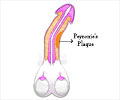Highlights:
- Research is on to convert scar tissue in the heart formed during a heart attack into normal heart muscle cells called cardiomyocytes
- The approach can help to restore the function of the heart following the attack
- Scientists have discovered the step-by-step changes that occur in the fibroblast cells during their conversion into cardiomyocytes.
Scientists have now been able to chalk out the details of this conversion. They have been able to identify the step-by-step changes that occur during this conversion including the molecular pathways and the important regulators that control the conversion. This knowledge will help scientists replicate the process in a live heart and make the treatment a reality.
The scientists used single cell RNA sequencing technology along with mathematical modeling and genetic and chemical approaches in their studies. During their research, they found that during the direct conversion of non-cardiomyocytes into cardiomyocytes, all the cells do not mature at the same times, and therefore while some cells are fully reprogrammed, some are partially reprogrammed while others may remain unconverted. The scientists hope to use this phenomenon to optimize treatment outcomes in a patient with heart attack.
Working on mouse fibroblast cells, the scientists found that:
- By changing the cell cycle status of the fibroblasts, the outcomes of the new myocyte formation could change.
- The susceptibility of the fibroblasts to reprogramming varies. Those formed more recently may be easier to be reprogrammed into cardiomyocytes.
- Changes were noted in the machinery responsible for protein synthesis. Depletion of a splicing factor called Ptbp1 involved in the process appeared to favor the conversion of fibroblasts to cardiomyocytes.
- New surface markers for the enrichment of the induced cardiomyocytes were also discovered.
Heart Attack
During a heart attack, the blood supply to a particular part of the heart stops due to a block in the supplying artery. The muscle cells of the heart called cardiomyocytes in the affected area die. Other cells called fibroblasts proliferate in these areas, resulting in the formation of fibrous or scar tissue. The scar tissue does not contribute to the pumping effect of the heart. Thus, following a large attack, the pumping ability of the heart reduces, and the patient could suffer from heart failure. Emergency treatment is primarily directed to minimize damage to the heart muscle.Reference:
- Ziqing Liu, Li Wang, Joshua D. Welch, Hong Ma, Yang Zhou, Haley Ruth Vaseghi, Shuo Yu, Joseph Blake Wall, Sahar Alimohamadi, Michael Zheng, Chaoying Yin, Weining Shen, Jan F. Prins, Jiandong Liu and Li Qian. Single-cell transcriptomics reconstructs fate conversion from fibroblast to cardiomyocyte. Nature (2017) doi:10.1038/nature24454
Source-Medindia
















